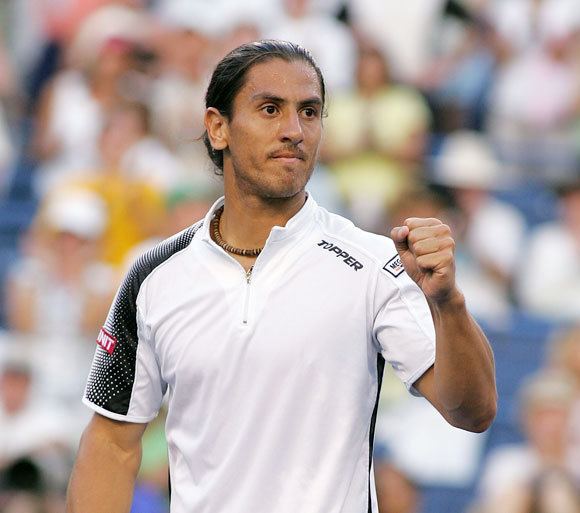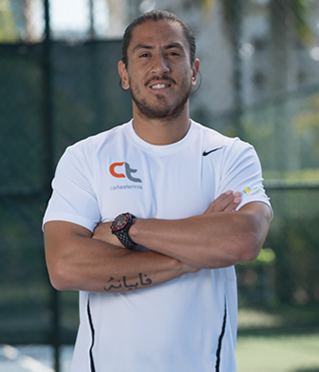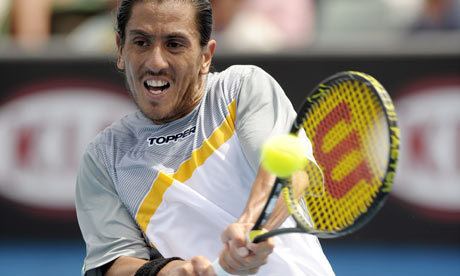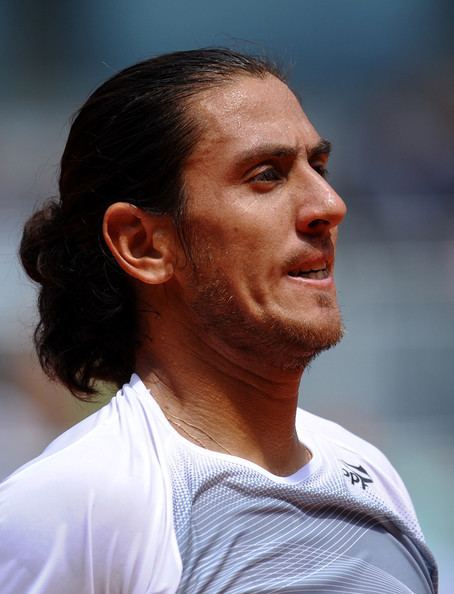Weight 86 kg Prize money US$ 5,285,575 Name Guillermo Canas Turned pro 1995 | Career record 252–195 Role Tennis player Career titles 7 Height 1.85 m Retired 2010 | |
 | ||
Plays Right-handed (two-handed backhand) Similar People Juan Ignacio Chela, Agustin Calleri, Jose Acasuso, Mariano Puerta, Gaston Gaudio | ||
Highest ranking No. 8 (June 6, 2005) | ||
Roger federer guillermo canas bagel beatdown
Guillermo Ignacio Cañas (born November 25, 1977), often referred to as Willy Cañas, is a retired Argentine professional tennis player. He was born in Argentina's capital, Buenos Aires, and named after Argentine tennis star Guillermo Vilas. His career-high singles ranking was World No. 8, achieved in June 2005. Cañas was the coach of Ernests Gulbis from July 2011 until May 2012 and became the coach of Teymuraz Gabashvili in 2015.
Contents
- Roger federer guillermo canas bagel beatdown
- Guillermo ca as no se pongan ni un segundo a pensar que del potro est en la davis
- Playing style
- Early years
- Doping
- Return
- Singles 16 79
- Doubles
- Singles 15 114
- Singles
- References

He now runs his own tennis academy in Aventura, Florida along with former tour pros Martín García, and Gustavo Oribe.

After being suspended in August 2005, Cañas returned to the circuit on September 2006 at the challenger of Belém, Brazil.

Cañas holds a record of 5 victories and 2 defeats (3:1 in singles) in Davis Cup matches.
Guillermo ca as no se pongan ni un segundo a pensar que del potro est en la davis
Playing style

Cañas played a defensive counter-punching game from the baseline, utilising his retrieving skills in order to frustrate opponents. He used a double-handed backhand.
Early years

Cañas started playing at age 7. He turned professional in 1995, and began playing on the juniors circuit, enjoying some successes; these included a runner-up appearance at Surbiton, United Kingdom, and a win in the doubles event at the Italian Junior Championships, partnering Martín García.

From 1995–1999, Cañas played mainly Challenger Series tournaments, that is, the level of competition directly below that of the ATP Tour. In April 1998, he broke into the top 100 for the first time, having won three Challenger tournaments in the previous 52 weeks. This allowed him to qualify for more ATP level tournaments, and he reached his first final in 1999 at Orlando. He also began to regularly qualify for Grand Slam tournaments, the most prestigious events in tennis.
In 2001, after a right wrist injury the previous year, he climbed from 227th place in the ATP rankings to the 15th, and was named ATP Comeback Player of Year. Cañas had won the first ATP level title of his career that season, in Casablanca, and reached the final of three other tournaments. In addition to this, he reached the fourth round of a Grand Slam tournament for the first time, achieving this result on two occasions, at the French Open and Wimbledon.
In the 2002 ATP Masters Series of Canada, an unseeded Cañas won his first ATP Masters Series title in Toronto, defeating Andy Roddick 6–4, 7–5 in the final. Cañas's path to the final saw him defeat a renowned set of players, including world number two Marat Safin, and top ten ranked Yevgeny Kafelnikov and Roger Federer. Cañas was also the first Argentine to win the Canada Open since Guillermo Vilas in 1976, and also the first to win a Masters Series shield (the Series was created in 1990). Cañas won one other tournament in 2002, the Chennai Open, and reached in the finals in Casablanca and Stuttgart. He also emerged as a more potent force at the Grand Slams, as he reached his first quarter-final at the French.
Doping
On August 8, 2005, Cañas was suspended for two years and was forced to forfeit US$276,070 in prizes by the ATP after testing positive for a diuretic called hydrochlorothiazide, a substance with no benefits in itself other than as treatment for hypertension, but used to cover other forbidden substances. No traces of any other forbidden substance were found in Cañas's sample, and the player asserts the diuretic was present in some medicine prescribed by ATP doctors Mercader and Chinchila for a cold he contracted during the Acapulco tournament in Mexico. At the time of his ban, Cañas had been at the highest ranking of his career, world number eight.
Cañas vowed to fight the ban, claiming he was innocent of the charges against him. Cañas took his case to the Court of Arbitration for Sport. His perseverance paid off on May 23, 2006, when he was acquitted of deliberate performance enhancement through illegal substances, since the substances were in a prescription medicine. He was, however, considered careless in not checking the medicine before ingesting it. He was allowed to return to full professional activity from September 11, 2006, and the money prizes acquired before the suspension were restored. Cañas's points, which determine a player's ranking, were nil upon his return, as they had expired.
Return
Upon his return to the tour, Cañas won five Challenger titles and one ATP title (2007 Brasil Open). In the six months after his return, he had won 42 of 47 matches, going from being unranked to rank 60. He won his first ATP-level match since his September return on February 15, 2007, beating Marcos Daniel 6–1, 6–4.
On March 11, 2007 Cañas defeated ATP ranked number one Roger Federer 7–5, 6–2 at the Indian Wells Masters, ending Federer's streak of 41 consecutive victories, 5 short of Guillermo Vilas's record on ATP Tour matches. He defeated Federer again (7–6, 2–6, 7–6) 16 days later at the Miami Masters to back-up his victory at Indian Wells. This double victory made him the only player (besides Rafael Nadal) to have defeated Federer in consecutive tournaments since 2003. Cañas told the New York Times that, "I came back very motivated, I came back with a lot of energy."
Cañas became the first qualifier to reach the semifinals of the Miami Masters. He made the final by beating Ivan Ljubičić, the seventh seed, 7–5, 6–2. In the final, the Argentine lost to rising talent Novak Djokovic of Serbia in straight sets. To get to the final, Cañas defeated Tim Henman, Juan Carlos Ferrero, Richard Gasquet, Roger Federer, Tommy Robredo, and Ivan Ljubičić, respectively, before losing to Novak Djoković. In spite of that loss, Cañas jumped 121 positions to reach the 22nd place in the ATP ranking as of April 30, 2007, the highest jump so far in the year.
Cañas reached the final of one more tournament in 2007, the Torneo Godó in Barcelona, where he lost to clay-court ace Rafael Nadal. Cañas commented afterwards that he believed he would be a strong contender at the French Open. However, his bid was thwarted for a third time at the quarter-final stage, as Nikolay Davydenko denied him an opportunity to play Federer for a third time in the next round. Having set himself a goal of finishing in the top 20, Cañas finished the year in 15th, equalling his finishes from 2001 and 2002. He announced his retirement from professional tennis in March 2010.
Singles: 16 (7–9)
Doubles
Singles: 15 (11–4)
Doubles
Singles
To prevent confusion and double counting, information in this table is updated only once a tournament or the player's participation in the tournament has concluded. This table is current through the 2008 Wimbledon.
A = did not participate in the tournament.
LQ = lost in qualifying draw
SR = the ratio of the number of singles tournaments won to the number of those tournaments played.
